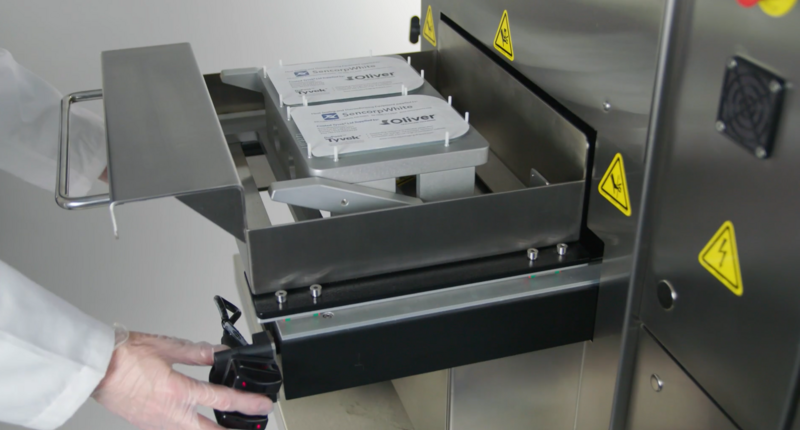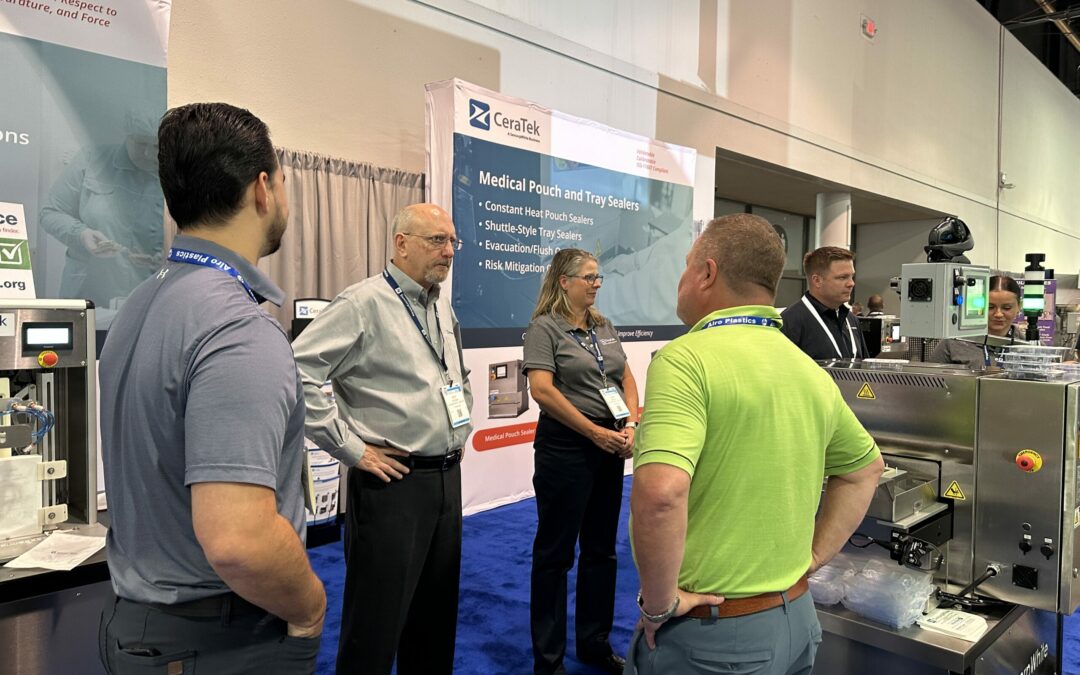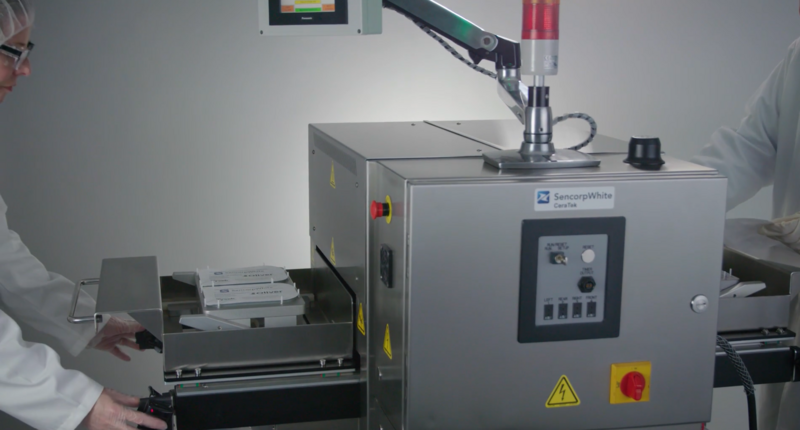Types of Medical Tray Sealers and Options

Types of sealers used for tray sealing medical products
Among all the different types of available sealers, constant heat sealers are the best choice for tray sealing. Constant heat sealers heat up to a set point temperature and then are very stable at that temperature. The typical cycle time on a constant heat sealer used for tray sealing applications is two to three seconds. While impulse sealers could be used for tray sealing, they require the heating bar to rise to temperature and cool down with every cycle.
That creates an impulse cycle time of about ten seconds, which is significantly longer than the cycle times possible with a constant heat sealer. In addition, because the thermodynamics change with every cycle on an impulsive sealer, it does not lend itself to the highly accurate and repeatable systems that are required for tray sealing medical devices. Impulse sealers are typically used for packages used in consumer markets, i.e., clamshell packaging where two plastic pieces are bonded together to create a weld seal.
Like impulse sealers, rotary sealers and cantilever sealers are not well-suited for sealing medical trays. To achieve a hermetic seal, it is critical for the both the lid and tray to conform and make intimate contact all the way around the perimeter of the tray. That means the tray sealer used must accommodate for the inherent variability of lid and tray materials by being extremely accurate and consistent, and there must be very tight parallelism across the entire sealing platform. Since cantilever sealers move in an arc, they are not able to offer the required parallelism.
Types of configurable options for tray sealers
Tray sealers can be configured with a few different options. For example, the shuttle movement of the tool into and out of the sealer can be designed to be semi-automated. Manufacturers need to weigh various pros and cons when determining whether this type of automation is advantageous.
On the one hand, configuring a tray sealer to be semi-automated can provide greater repeatability and free the operator for other tasks, such as pre-kitting or inspection, and that could potentially increase throughput. However, for safety reasons, semi-automating a tray sealer typically creates a process that is slower than if the operator was working unassisted. That can increase cycle time and decrease output.
Tray sealers can also be configured with barcode scanning. A barcode scanner can be used to ensure that the correct recipe is loaded onto the tray sealer for the next run and to verify that the tool that is loaded is the correct one for the recipe that is currently running. Other options, such as in-line non-destructive seal inspection are currently in development.






